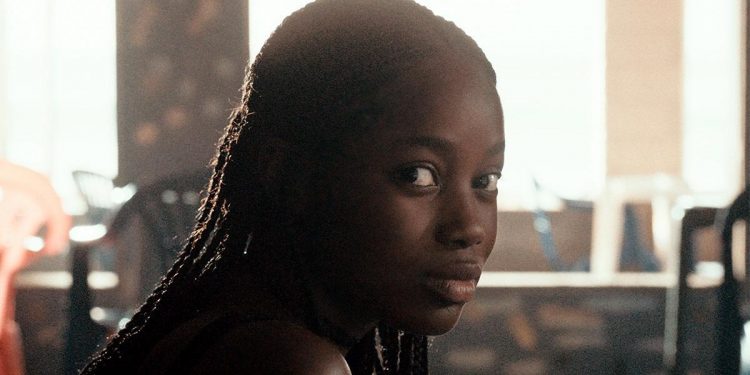Early in “Atlantics,” our heroine, Ada, receives some bad news. Director Mati Diop zeroes in on her face as she sits, wordlessly taking in the news. She walks home, silently, in repose. The next day she is still pensive, still wordless. This sequence covers about four minutes of the film and we hear not a word from Ada. Instead we keep zeroing on that face. The evocative eyes. The naked open despair. At the end of the film, after going through a wealth of experiences Diop returns to that face as Ada narrates, “I am Ada.” Her eyes stare out at the audience as the screen fades to black.
There are a number of things at work in “Atlantics,” a film juggling issues of politics, feminism, religion and family but the faces, Ada’s in particular, and Diop’s interest in film as a medium for unceasing empathy are central throughout. For Diop, a tale ostensibly about a pair of marginalised lovers is really the backdrop for a complex exploration of the hopes and dreams in a politically fraught society.
In the Q and A after the film’s premiere at this year’s Toronto International Film Festival (TIFF), Diop spoke of her need for the film’s multiple themes to be grounded in a love story featuring a black couple and although “Atlantics” works better as class critique and feminist blueprint, it’s not because that love story isn’t critical or thoughtful.

The story concerns the teenager Ada, played by Mame Sane, betrothed to a Senegalese expatriate but in love with the poor Solemein. Tragedy strikes their relationship early on and the film mixes the quest for closure to their romance with a political critique that merges realism and the supernatural. Throughout, Diop emphasises the faces of her young African cast, comprising mostly new actors, as if to write in giant text: THESE ARE THE FACES OF SENEGAL.
The closest thing to an audience surrogate in the film is Ada’s best friend, Dior, played excellently by young actress Nicole Sougou. There are numerous scenes of Ada, Dior and groups of young girls discussing their lives, their conflicts, and their dreams. These are the best moments of the film. From the incidental moments, like a group of them exclaiming at the ornateness of a bridal bedroom to a heated argument putting different ideas of women against each other, the women in “Atlantics” represent the gamut of possibilities and challenges for those in Senegal.
In many ways, the film is a love letter to Senegal. Diop’s camera regards the world with a tenderness that indicates “Atlantics” interest in its subjects and their home as one of empathetic incisiveness rather than superficial travelogue. The camera lingers on shots of the moon, the setting sun, the restless waves and the dusty streets of the town. These shots set up important plot points that turn the second half of the film into a gripping supernatural thriller but it also reveals the way that Diop wants to recognise the cultural specificity of the place these characters inhabit. It’s there in the soundtrack, merging the past and the present, and the photography. There’s a rustic beauty to the richness of shots where the characters move while bathed in darkness. The darkness here imitates the shadowy darkness of their lives—not of mystery but of hopelessness. Over time, Diop works to bring light to the narrative with a tenderness that sneaks up on you as the film goes on.
The film’s interest in multiple themes manages to achieve depth without the pitfalls that can attend discursiveness. At the start, there is an argument between an employer and employees. A group of poor, young factory workers are criticising their lack of payment for a three-month period. But the folks in charge are ambivalent. This is normal. While the film seems to abandon this plot point for much of its runtime, all the disparate parts come together by the end of “Atlantics” with a lacerating critique of class and society.
What’s impressive is that throughout Diop maintains an intriguing restraint. She privileges is expressionistic aesthetics over literal ones; her themes are always implied rather than explicated.
Diop’s film is relevant and personal. At the Q and A after the premiere, you could tell the emotional connection she felt as she spoke of the way that poor Africans have been sold the lie of idealising Europe and of the corruption and exploitation at home that find them seeking hopeless dreams across the waves of the Atlantics. But in the face of Mame Sane and significantly on the backs of women, “Atlantics” argues, gently but clearly, for a more thoughtful representation of Africa on screen. It’s a tender film but its ethos packs a punch.





